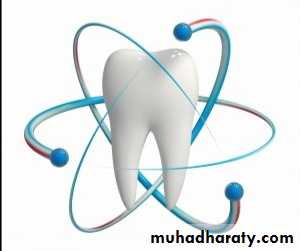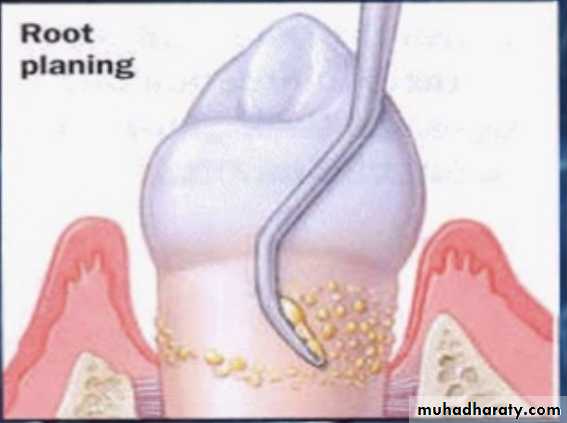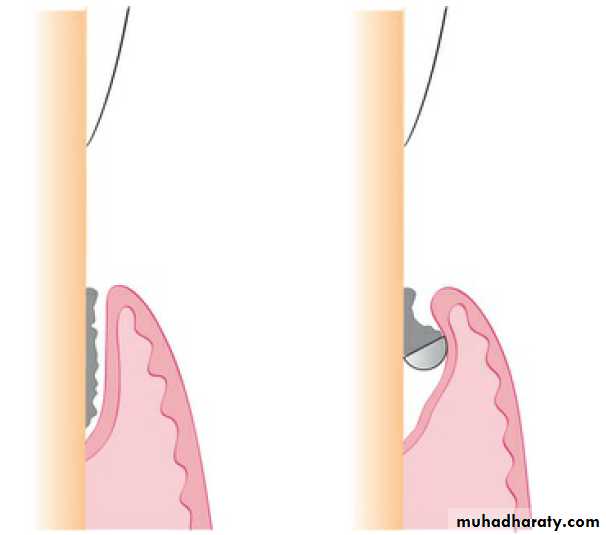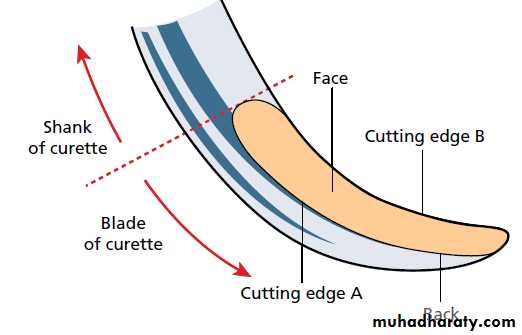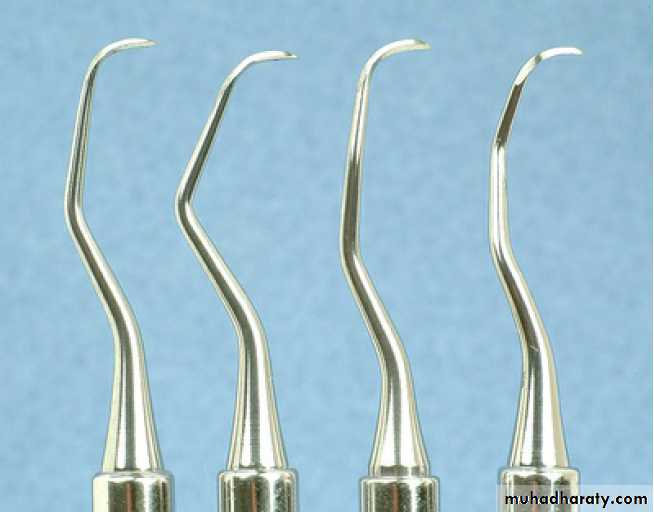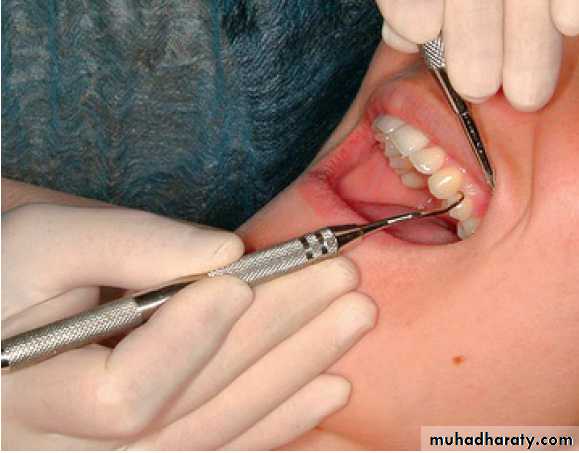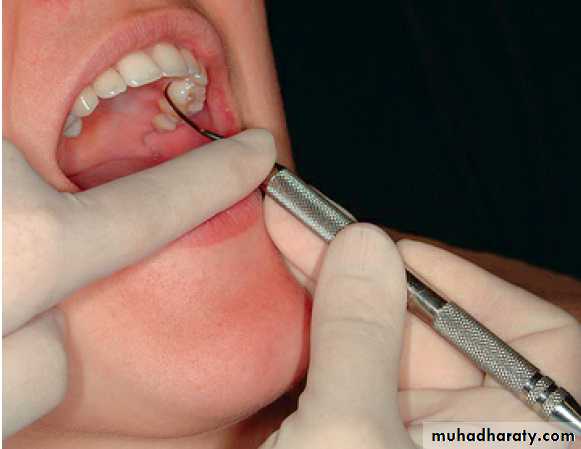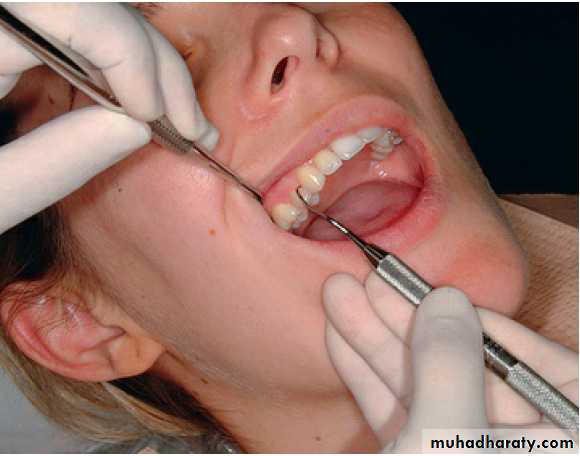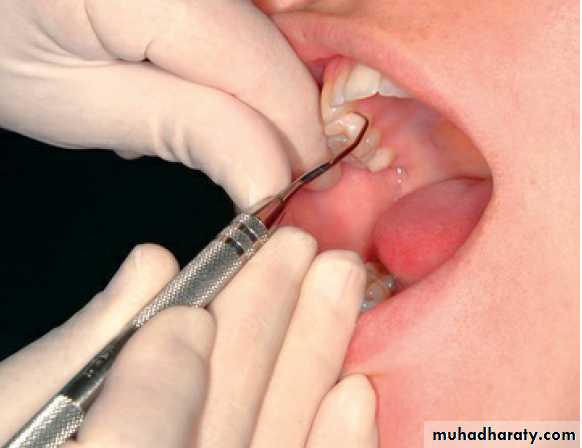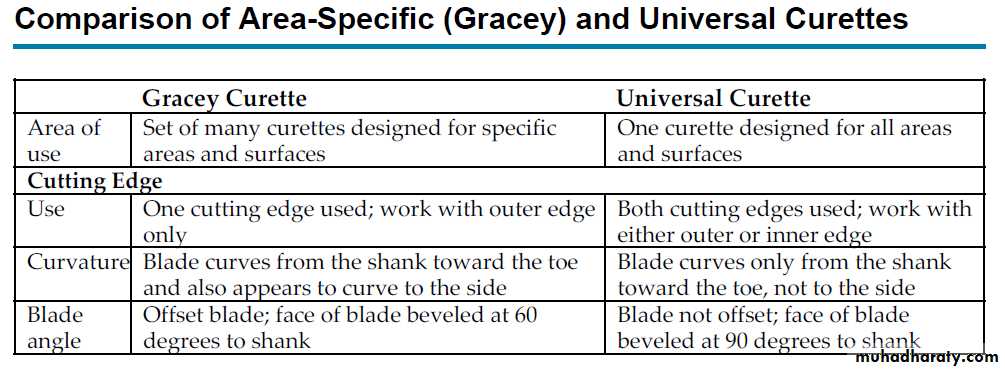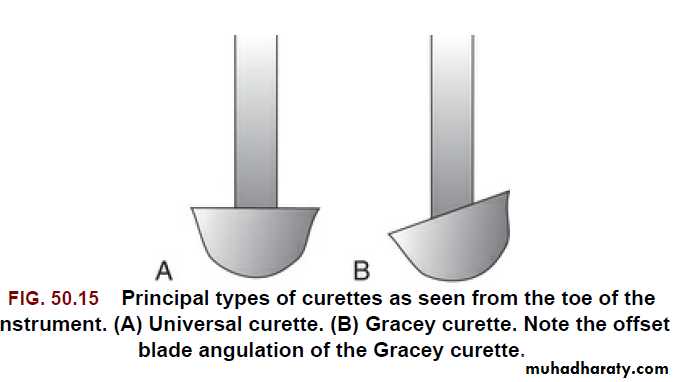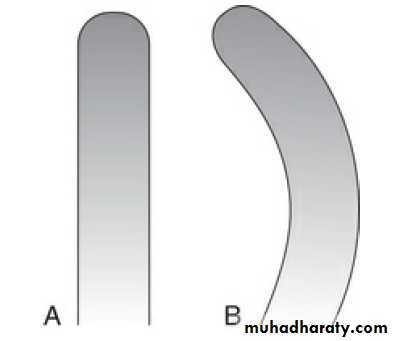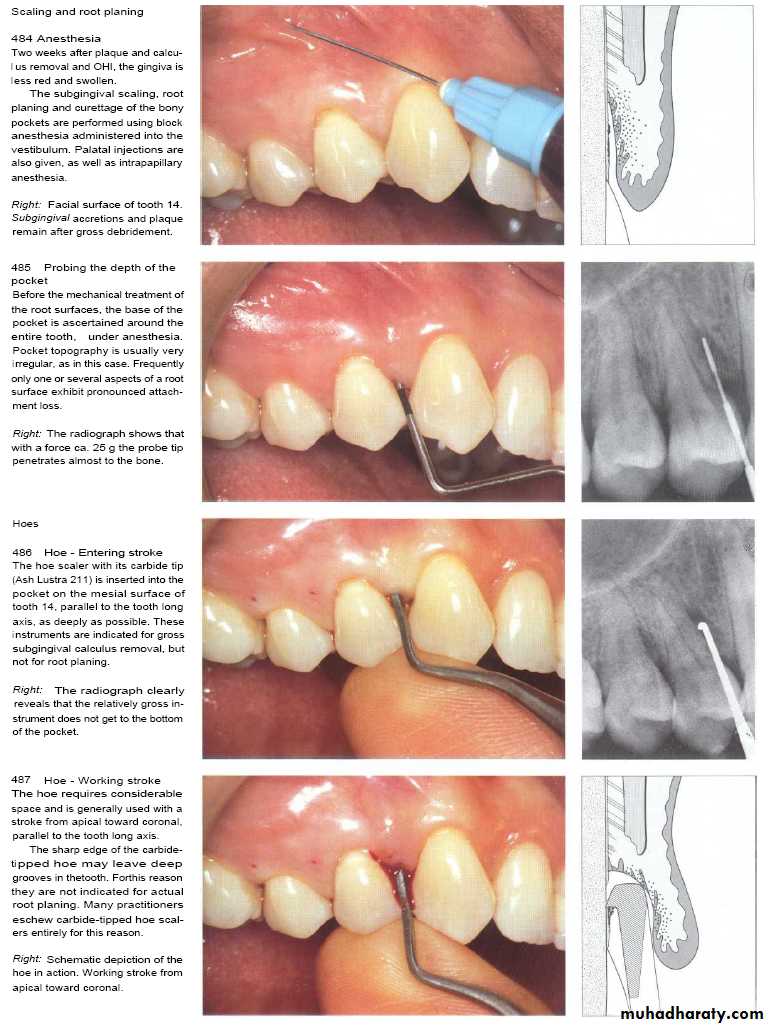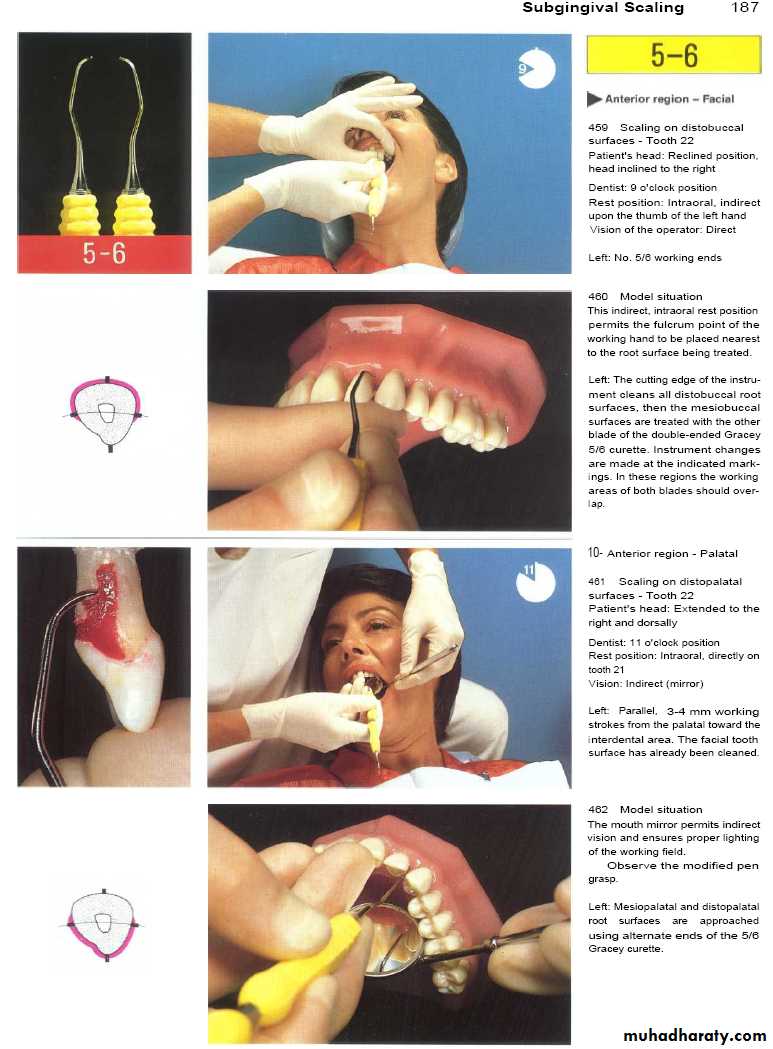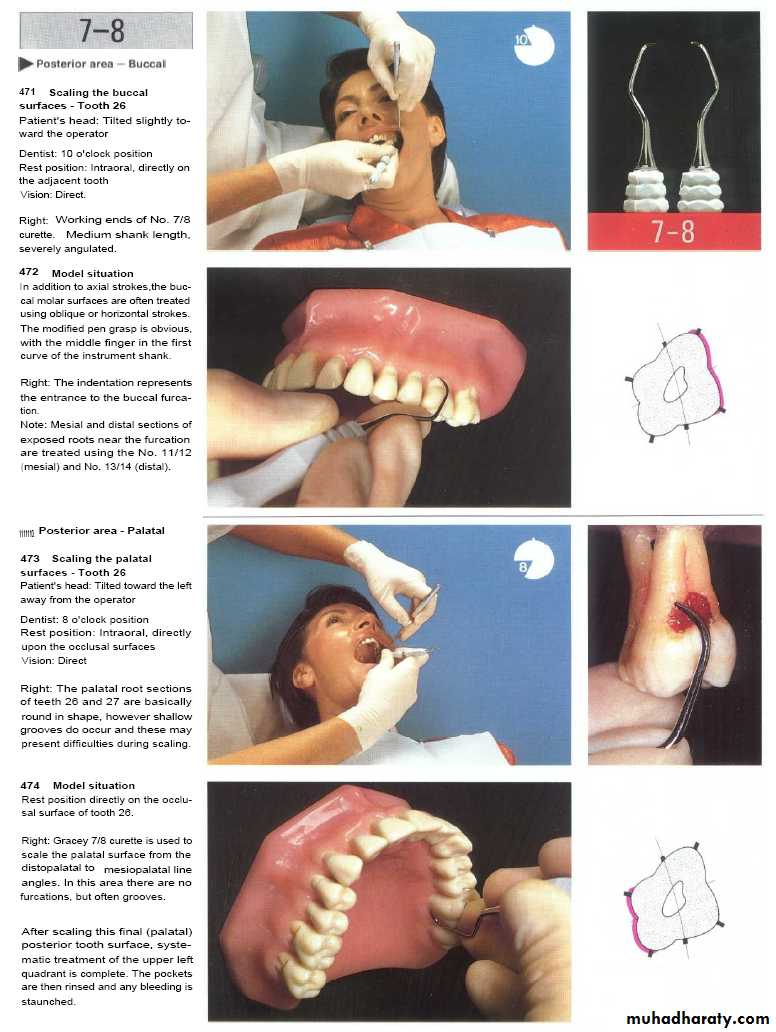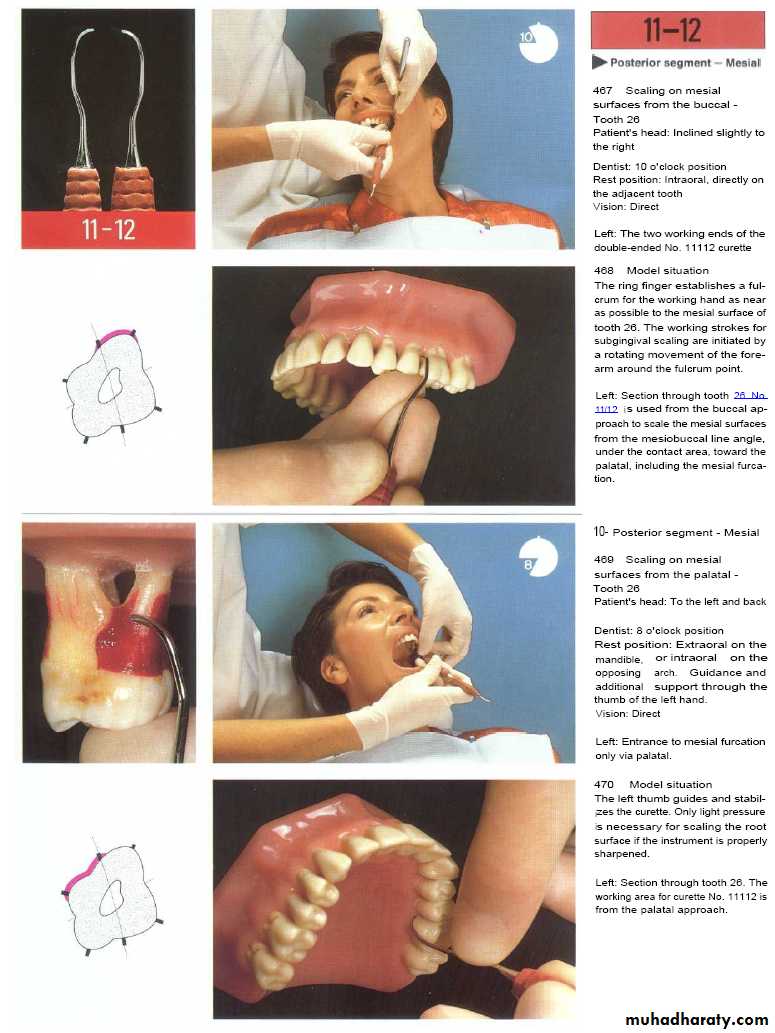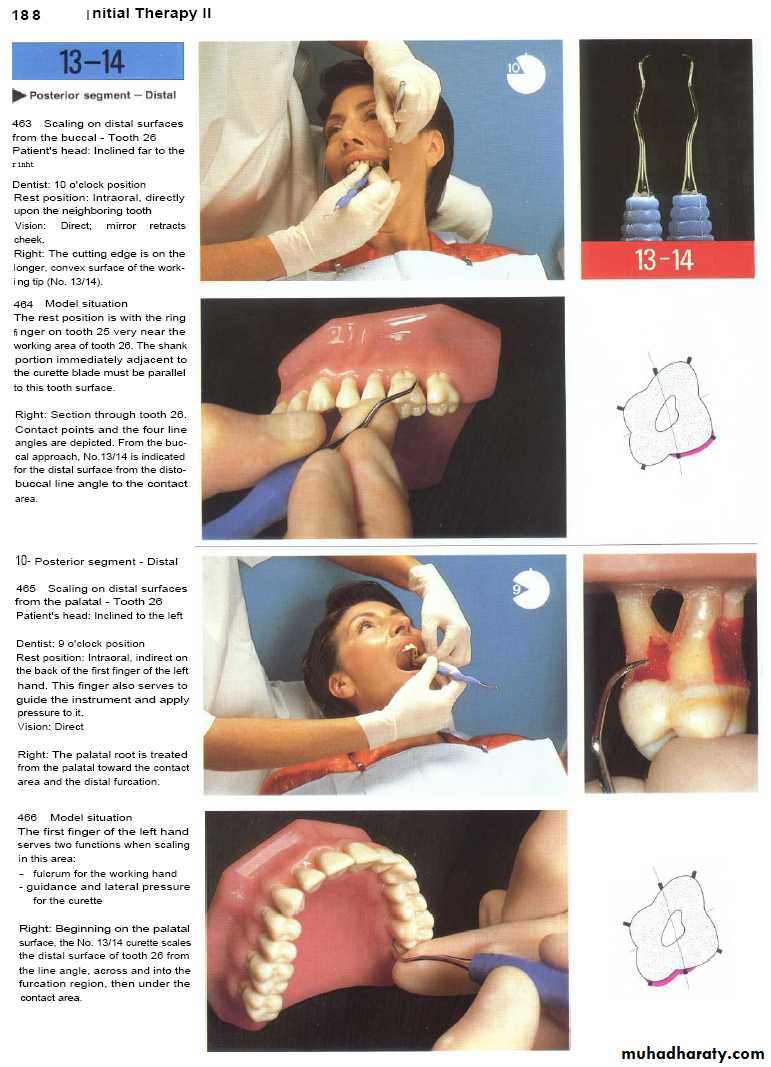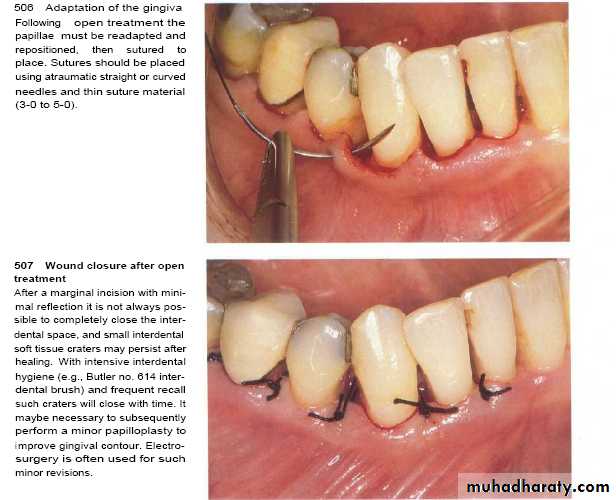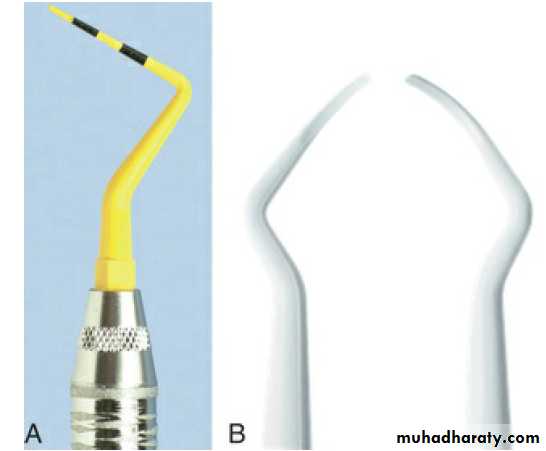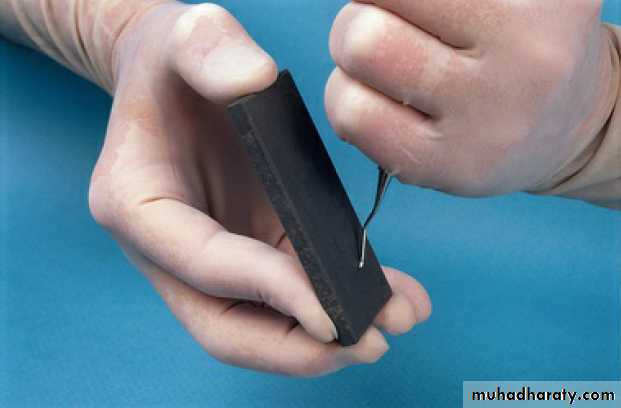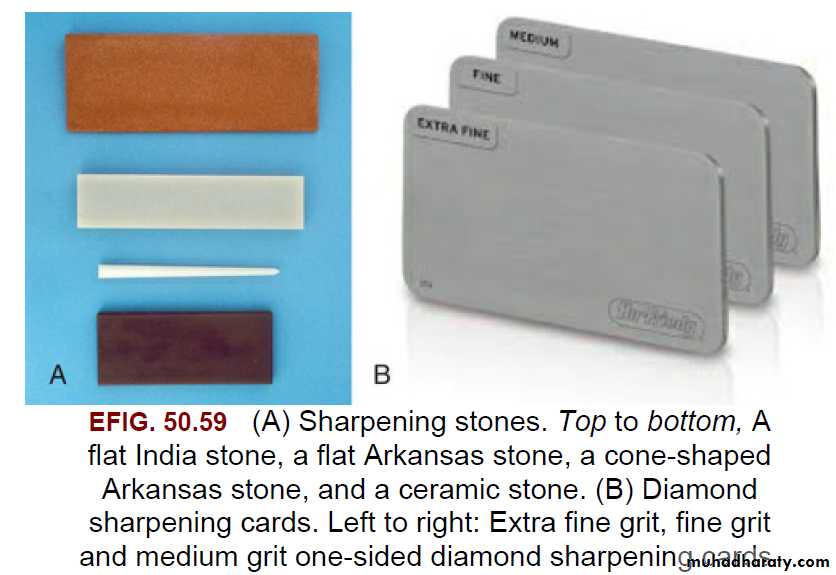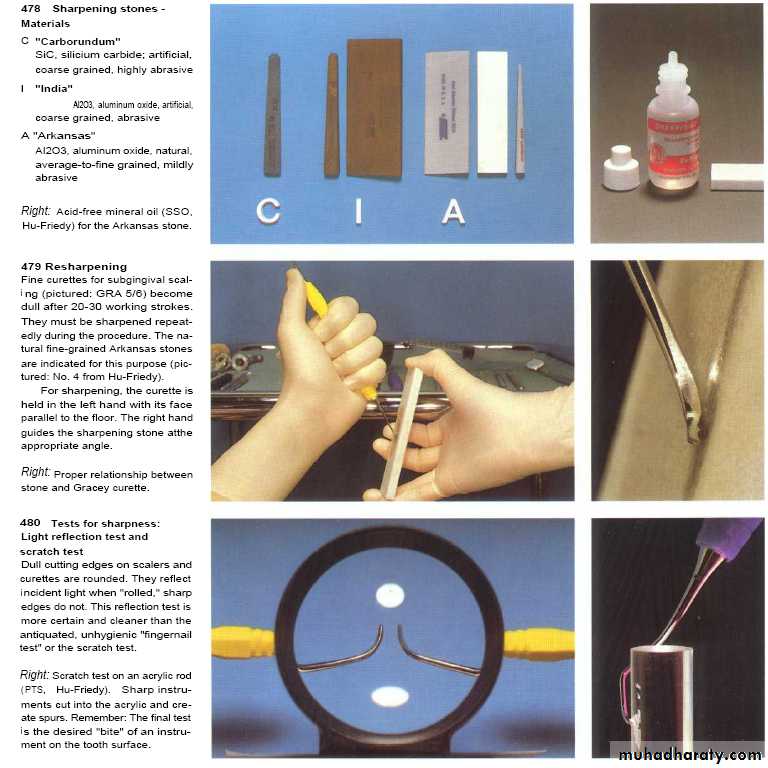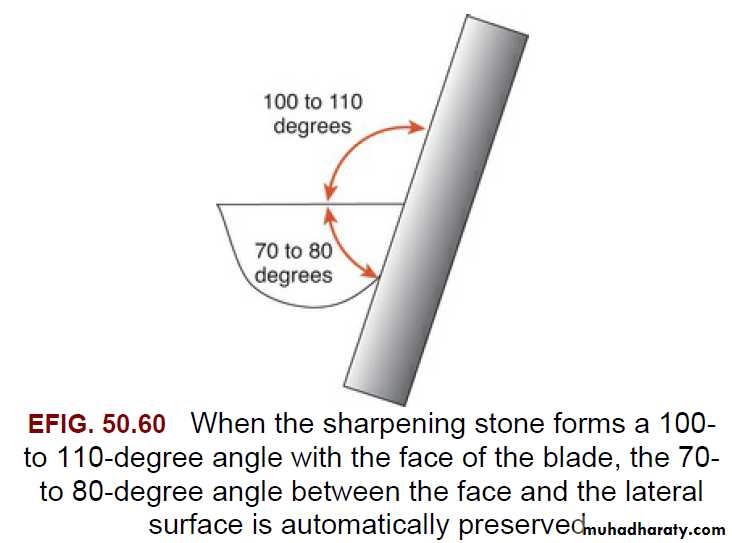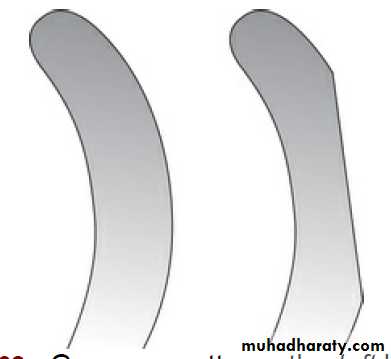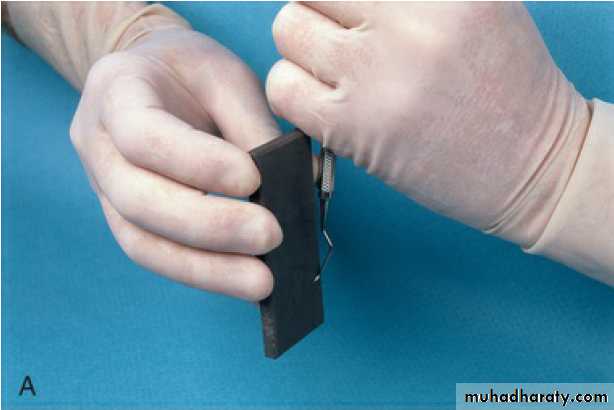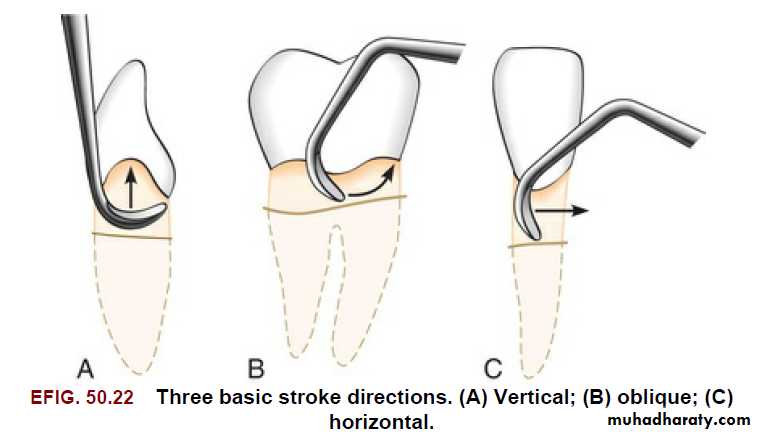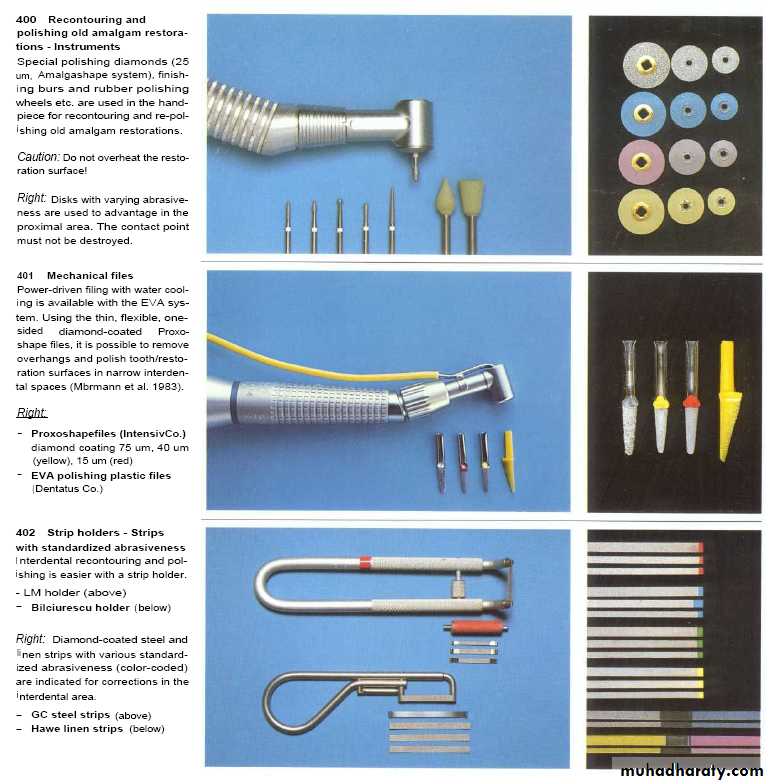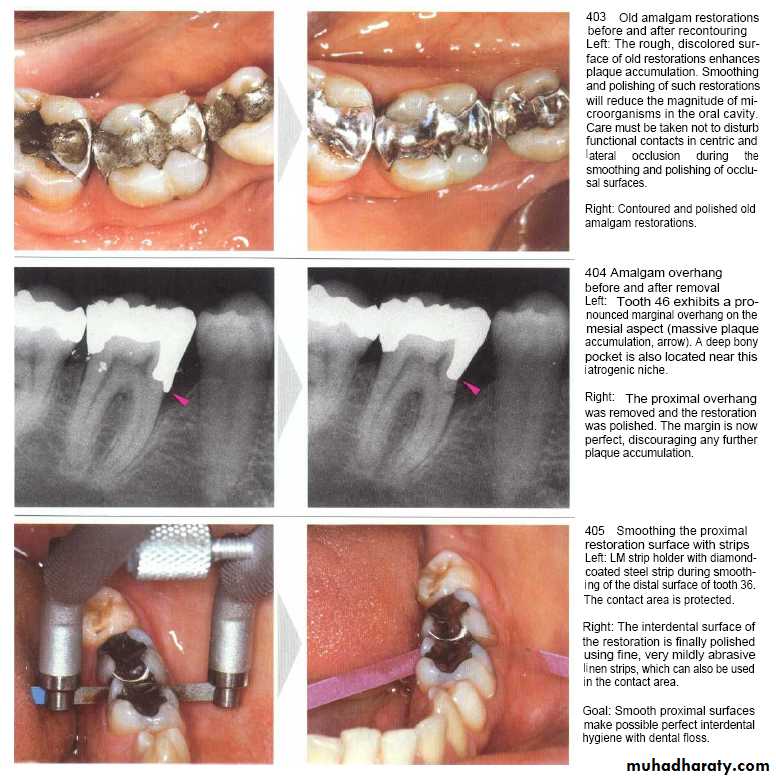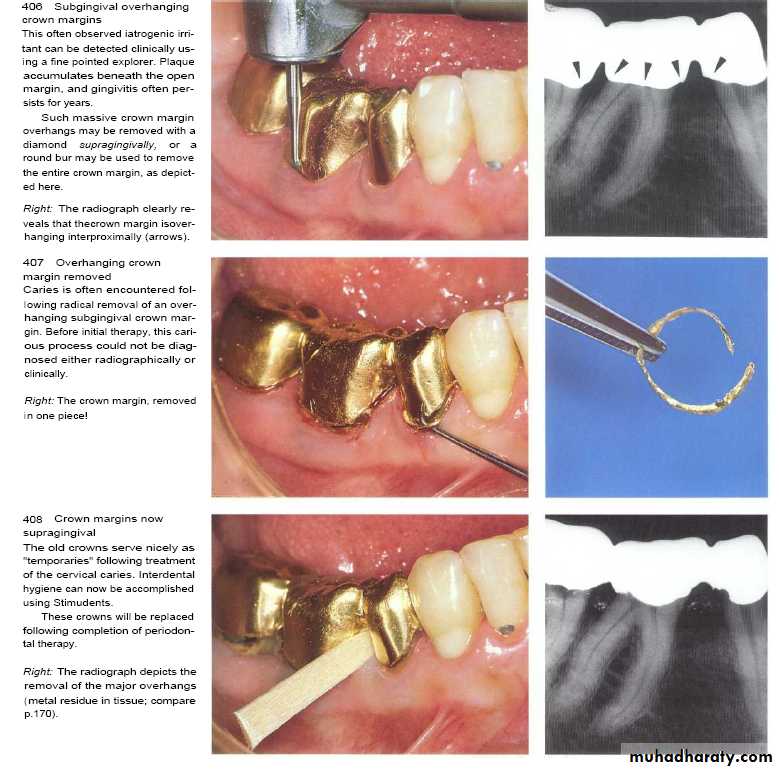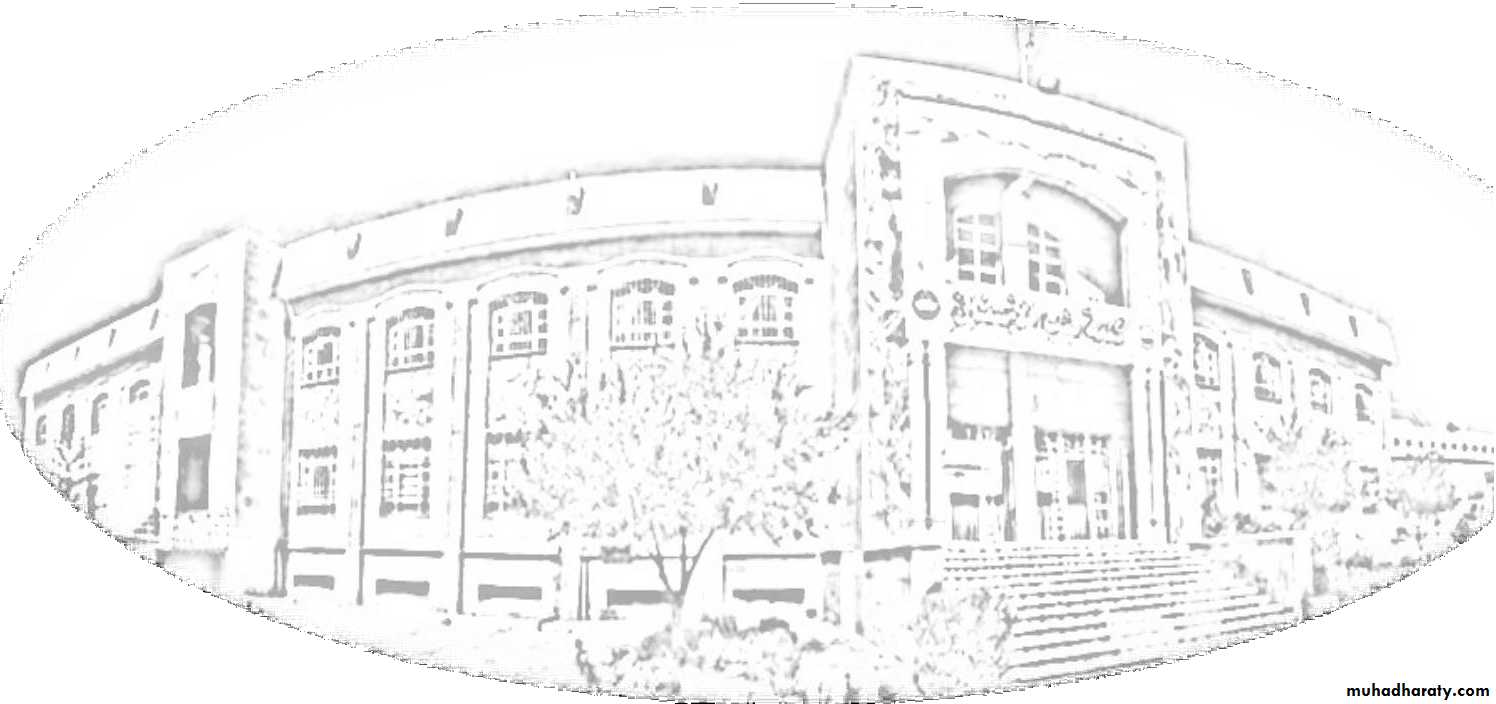Root Planning
UNIVERSITY OF MOSULCOLLEGE OF DENTISTRY
By: Dr. Huda A. Salim
B.D.S, M.Sc. In Oral and Maxillofacial Surgery
Mosul University/College of Dentistry/Oral and Maxillofacial Department.
2020-2021
Department of:Oral and Maxillofacial Surgery.
Department of:
HEREUNIVERSITY OF MOSUL
COLLEGE OF DENTISTRY Root planing is the process by which residual embedded calculus and portions of Cementum are removed from the roots to produce a smooth, hard, clean surface.
UNIVERSITY OF MOSUL
COLLEGE OF DENTISTRY
R.P. done either by closed or opened technique:
Closed: mean without displacement of Gingiva.Opened: with displacement of Gingiva & exposure of Root surface & alveolar bone for access & visibility
Instrument used ;
Hand Inst.
ultrasonic & sonic scaler.
rotating Inst.
UNIVERSITY OF MOSUL
COLLEGE OF DENTISTRYAdvantages & disadvantages:
Less trauma ,Gingiva shrinkage is less (esthetic).
Good result with maintenance.BUT, no direct vision so some Root surface are missed.
Need manual dexterity.UNIVERSITY OF MOSUL
COLLEGE OF DENTISTRYCurettes:
The curette is the instrument of choice for removing deep subgingival calculus, root planing, removed altered Cementum, and removing the soft tissue lining the periodontal pocket. Each working end has a cutting edge on both sides of the blade and a rounded toe.
Curettes are finer than sickle scalers and do not have any sharp points or corners other than the cutting edges of the blade.
Therefore curettes can be adapted for and provide good access to deep pockets, with minimal soft tissue trauma.
UNIVERSITY OF MOSUL
COLLEGE OF DENTISTRY The two basic types of curettes:
Universal. Gracey curette (area specific).
The cutting edge of an instrument is formed by the angular junction of two surfaces of its blade.
The cutting edges of a curette, for example, are formed where the face of the blade meets the lateral surfaces.
UNIVERSITY OF MOSUL
COLLEGE OF DENTISTRYUniversal Curettes:
The primary advantage of these curettes is that they are designed to be used universally on all tooth surfaces, in all regions of the mouth.
The blade size and the angle and length of the shank may vary, but the face of the blade of every universal curette is at a 90-degree angle (perpendicular) to the lower shank when seen in cross section from the tip.
The blade of the universal curette is curved in one direction from the head of the blade toward the toe.
universal curettes have limited adaptability for the treatment of deep pockets in which apical migration of the attachment has exposed furcation, root convexities, and developmental depressions.
UNIVERSITY OF MOSUL
COLLEGE OF DENTISTRYArea-Specific Curettes (Gracey Curettes):
a set of several instruments designed and angled to adapt to specific anatomic areas of the dentition.
These curettes and their modifications are probably the best instruments for subgingival scaling and root planing because they provide the best adaptation to complex root anatomy.
Gracey curettes because they are angled approximately 60 to 70 degrees from the lower shank term offset blade.
UNIVERSITY OF MOSUL
COLLEGE OF DENTISTRY020-2021
Double-ended Gracey curettes are paired in the following manner:
Gracey #1-2 and #3-4.
Gracey #5-6.
Gracey #7-8 and #9-10.
Gracey #11-12.
Gracey #13-14.
UNIVERSITY OF MOSUL
COLLEGE OF DENTISTRY
020-2021
UNIVERSITY OF MOSUL
COLLEGE OF DENTISTRY020-2021
UNIVERSITY OF MOSUL
COLLEGE OF DENTISTRY020-2021
R.P. Procedure:
Lower shank should be parallel with long axis of tooth , so cutting edge will be at 45 with tooth surface.
R.P. continue with controlled overlapping ,short, powerful strokes without withdrawing inst. from pocket (working stroke).
In proximal surface place with long axis
neither tilted away from tooth
nor tilted too far toward tooth.
Finishing stroke:
longer
lighter
with less lateral pressure
UNIVERSITY OF MOSUL
COLLEGE OF DENTISTRYUNIVERSITY OF MOSUL
COLLEGE OF DENTISTRYDepartment of:
HERE
UNIVERSITY OF MOSUL
COLLEGE OF DENTISTRYNote:
suturing of the separated papillae
UNIVERSITY OF MOSUL
COLLEGE OF DENTISTRYPlastic and Titanium Instruments for Implants:
Several companies are manufacturing plastic and titanium instruments for use on titanium and other implant abutment materials.
It is important that plastic or titanium instruments be used to avoid scarring and permanent damage to implants.
They may be used for implant maintenance with
careful, light-pressured strokes for biofilm and light calculus removal.
Moderate - or heavy-pressured strokes should be avoided to prevent scratching or roughening of implant surfaces.
UNIVERSITY OF MOSUL
COLLEGE OF DENTISTRYNote:
Proper positioning of the patient and the operator, illumination and retraction for optimal visibility, and sharp instruments are fundamental prerequisites for effective instrumentation.
UNIVERSITY OF MOSUL
COLLEGE OF DENTISTRY
Condition and Sharpness of Instruments:
All instruments should be inspected to make sure that they clean, sterile, and in good condition.
The working ends of pointed or bladed instruments must be sharp to be effective.
Sharp instruments enhance tactile sensitivity and allow the clinician to work more precisely and efficiently.
Dull instruments may lead to incomplete
calculus removal and unnecessary trauma because
of the excess force usually applied to compensate
for their ineffectiveness.
UNIVERSITY OF MOSUL
COLLEGE OF DENTISTRY
Sharpening Stones:
It is impossible to carry out periodontal procedures efficiently with dull instruments.
A sharp instrument cuts more precisely and quickly than a dull instrument.
The surface of the stone is made up of abrasive crystals that are harder than the metal of the instrument to be sharpened.
UNIVERSITY OF MOSUL
COLLEGE OF DENTISTRYSharpening Stones:
Sharpening stones may be quarried from natural mineral deposits or produced artificially.
India and Arkansas oilstones are examples of natural abrasive stones.
Carborundum, ruby, and ceramic stones are synthetically produced.
Sharpening stones can also be categorized by their method of use.
Mounted Rotary Stones
Unmounted Stones or Sharpening Cards
Diamond Sharpening Cards
UNIVERSITY OF MOSUL
COLLEGE OF DENTISTRYDepartment of:
Sharpness can be evaluated by sight and touch in one of the following ways:
1- Reflection of light .
2. Tactile evaluation of sharpness by “sharpening test stick.”
Note: Holding curette in modified pen grasp
with a finger rest to provide stable fulcrum
Detect base of pocket
Firm working stroke.
HERE
UNIVERSITY OF MOSUL
COLLEGE OF DENTISTRYDepartment of:
HERE
UNIVERSITY OF MOSUL
COLLEGE OF DENTISTRYstrokes:
Three basic types of strokes are used during instrumentation: the exploratory stroke, the scaling stroke, and the root-planing stroke.
Any of these basic strokes may be activated by a pull or push motion in a vertical, oblique, or horizontal direction.
Vertical and oblique strokes are used most frequently. Horizontal strokes are used selectively on line angles or deep pockets that cannot be negotiated with vertical or oblique strokes.
The direction, length, pressure, and number of strokes necessary for either scaling or root planing are determined by four major factors:
(1) gingival position and tone.
(2) pocket depth and shape.
(3) tooth contour.
(4) the amount and nature of the calculus or roughness.
HERE
UNIVERSITY OF MOSUL
COLLEGE OF DENTISTRYDepartment of:
HERE
UNIVERSITY OF MOSUL
COLLEGE OF DENTISTRYExploratory stroke
Root-planing stroke
scaling strokeUNIVERSITY OF MOSUL
COLLEGE OF DENTISTRYExploratory stroke: is a light “feeling” stroke that is used with probes and explorers to evaluate the dimensions of the pocket and to detect calculus and irregularities of the tooth surface.
The instrument is grasped lightly and adapted with light pressure against the tooth to achieve maximal tactile sensitivity.
scaling stroke: is a short, powerful pull stroke that is used with blade instrument
for the removal of both supragingival and subgingival calculus.The scaling motion should be initiated in the forearm and transmitted from the wrist
to the hand with a slight flexing of the fingers.
The scaling stroke is not initiated in the wrist or fingers, nor is it carried out independently without the use of the forearm.UNIVERSITY OF MOSUL
COLLEGE OF DENTISTRYRoot-planing stroke: is a moderate to light pull stroke that is used for final smoothing and planing of the root surface. The design of the curette, which allows it to be more easily adapted to subgingival tooth contours, makes it particularly suitable for root planing in periodontal patients.
UNIVERSITY OF MOSUL
COLLEGE OF DENTISTRYRemoval of plaque retentive factors:
replacement.Using scaler or file.
Flame shaped diamond bur mounted on H.P. for rotating movement.
Flat diamond stone bur mounted on H.P. for horizontal reciprocal movement (EVA system).
Metal strip with special handle.
UNIVERSITY OF MOSUL
COLLEGE OF DENTISTRYUNIVERSITY OF MOSUL
COLLEGE OF DENTISTRYTHE END
2020-2021






